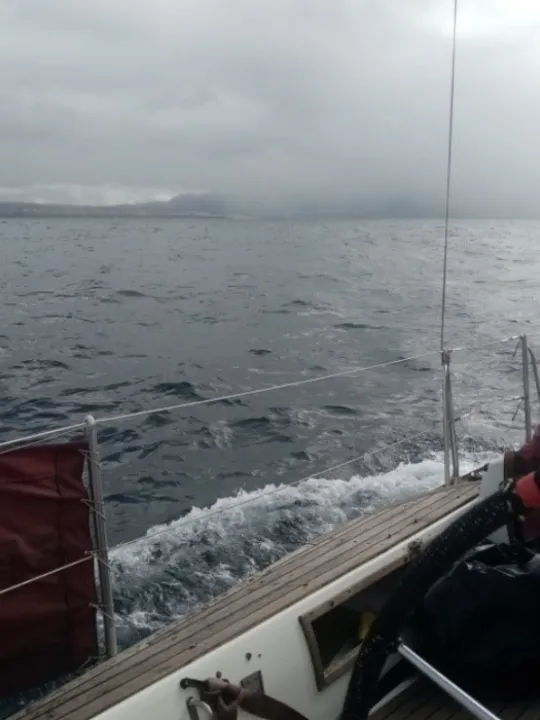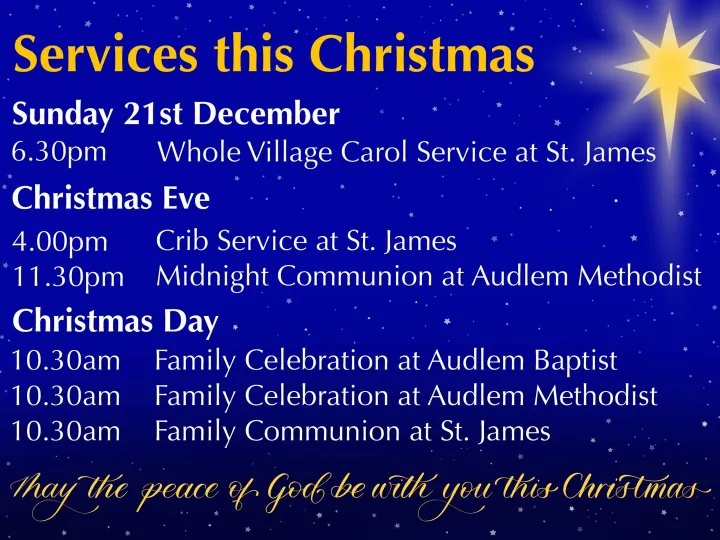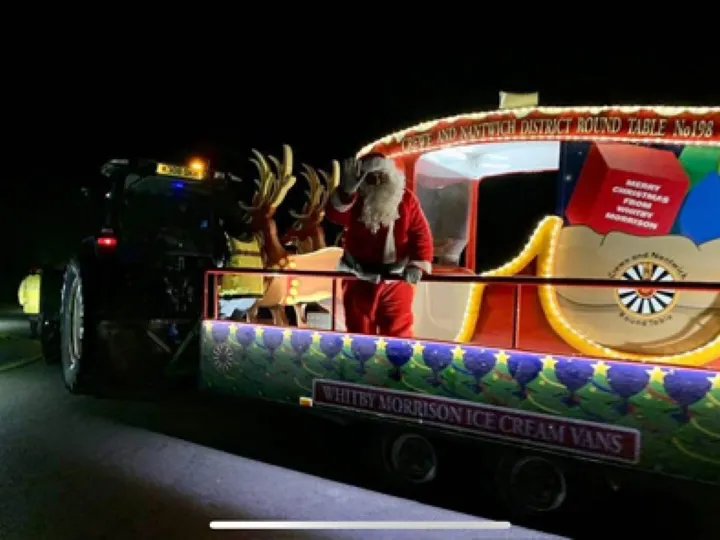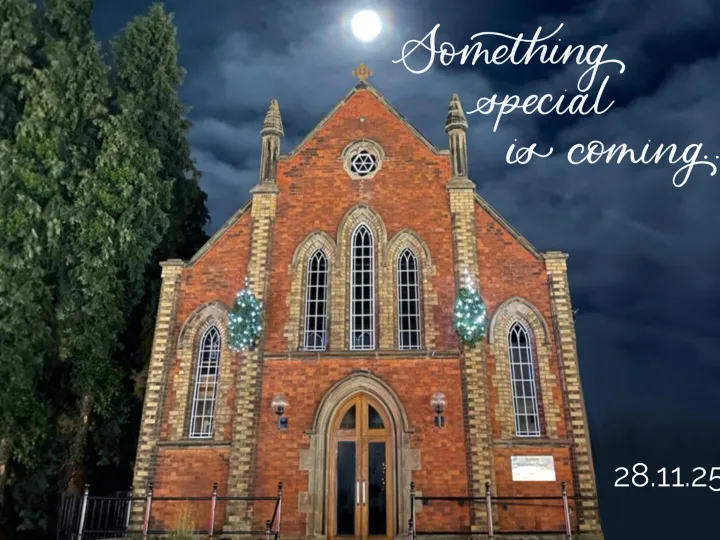An Atlantic Adventure – Part 2
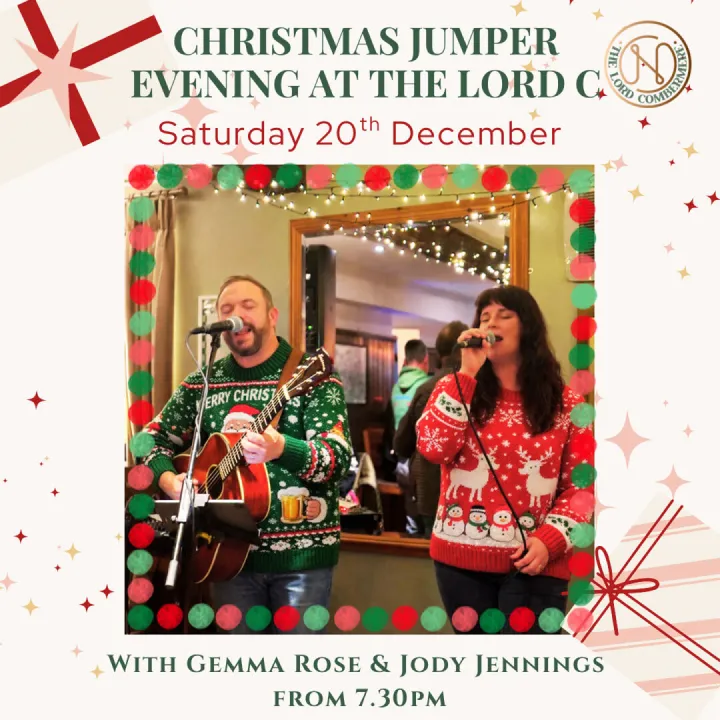
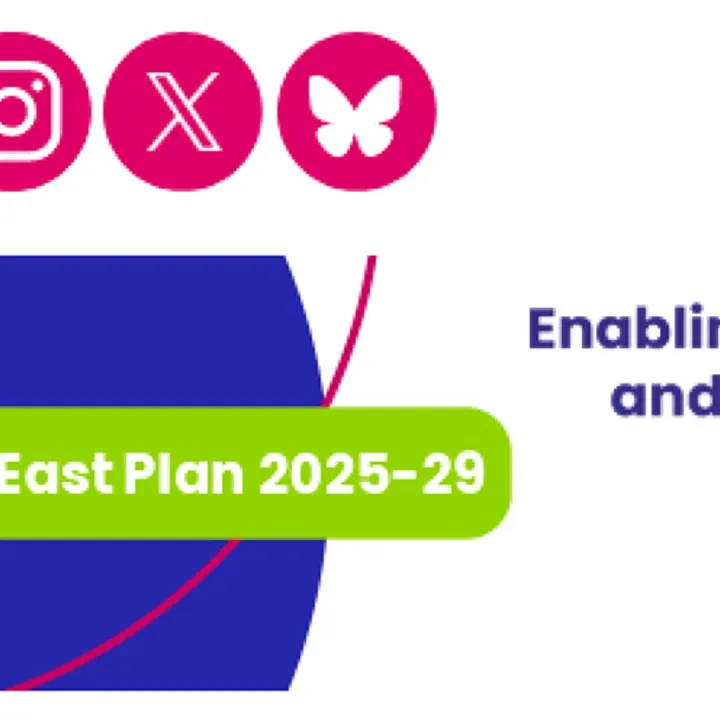
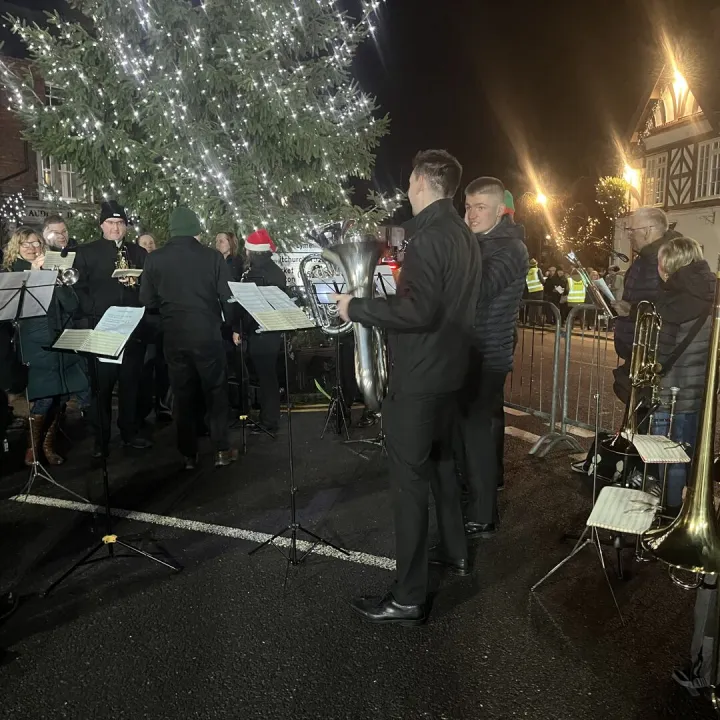
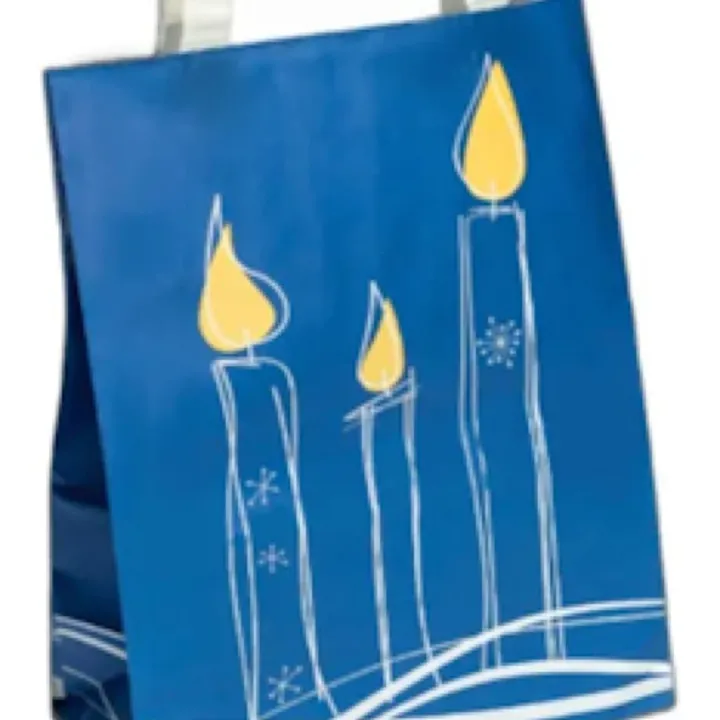
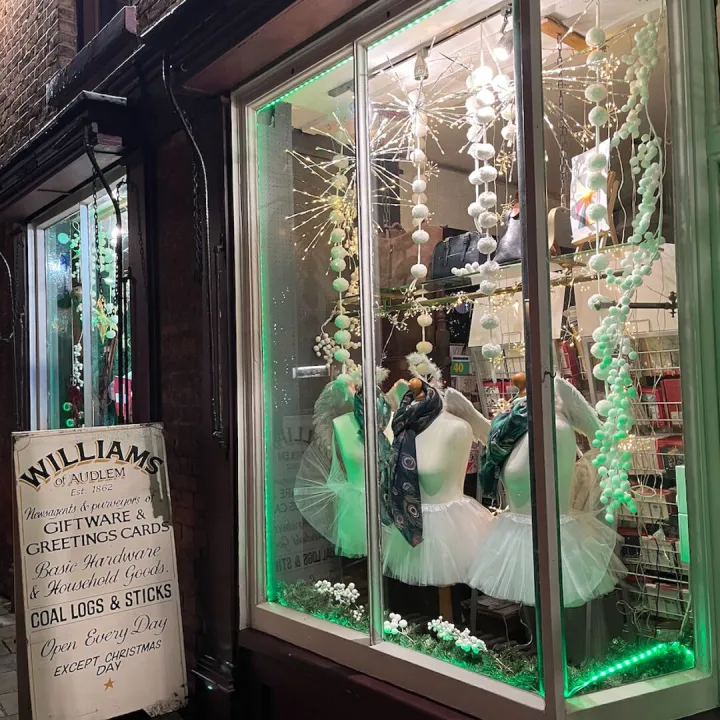
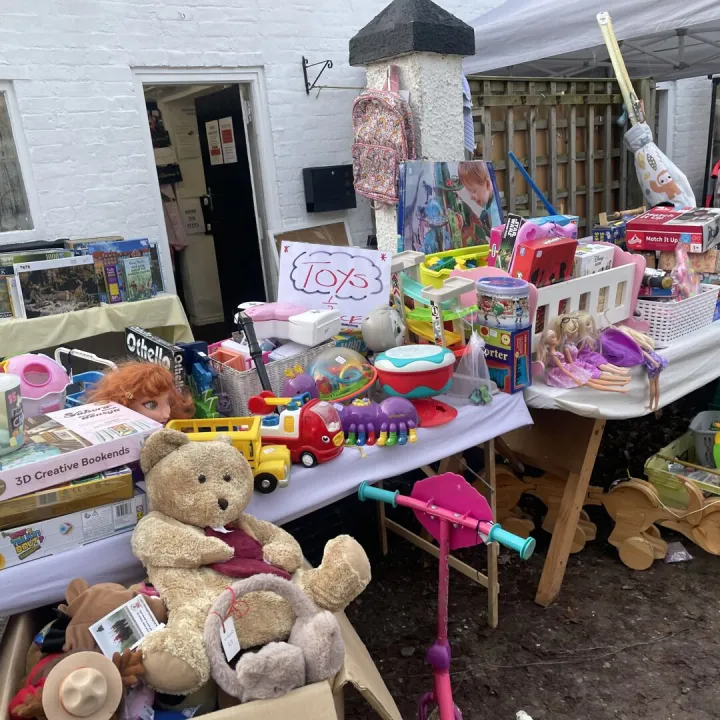
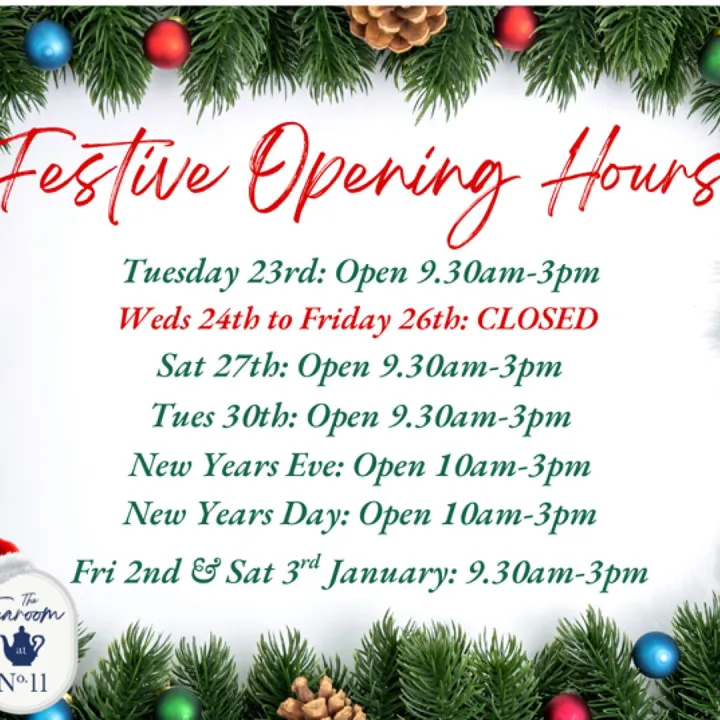
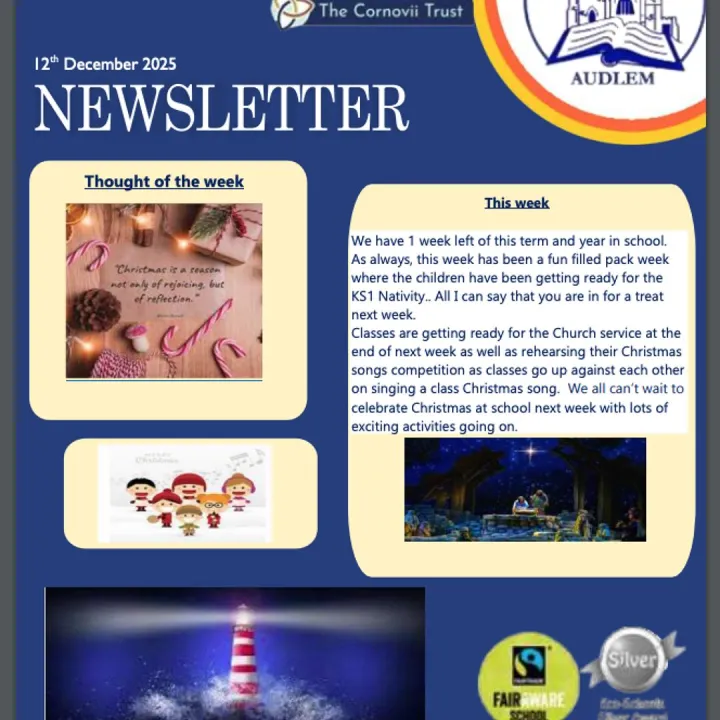
"Sail south until the butter melts!" An Atlantic adventure.
Bob Fousert with apologies to real Sailors.
This is part 2 of Bob's story – if you missed part 1 last Sunday, you can see it here .
Phase 2 – Plymouth – Las Palmas (1470 NM – 1690 miles)
From stories I have heard, crossing the Bay of Biscay can be rough and very unpleasant at the best of times, even in large passenger ships, so it was with some trepidation that we prepared our little yacht for the next phase of our trip to join the ARC at Las Palmas. This feeling was not helped by the fact that were crossing in winter and that our departure from Plymouth had to be delayed by two days because of storm Arwen which, we knew, would have left its effect upon the sea state.
So with a brand new set of sails fitted and after resupplying with fuel, water and food we left Plymouth, heading due south feeling as fully prepared as we could be, for the proposed six-day journey to our first stop in Lisbon, Portugal. Added to which there was some reassurance from Phil that according to his numerous sources of sailing information, there was only a 15 per cent chance of being hit by a storm at that time of the year!
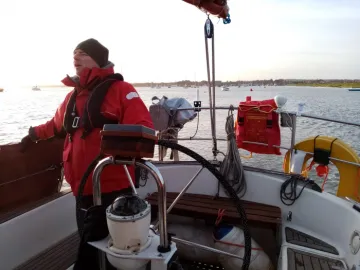
Sunday 28.11.21 We departed Plymouth at 10.10, in high seas, set the sails and headed out towards Eddystone Lighthouse (10 miles) with a good north westerly wind, at an average speed of 6.8kts. No sooner had we reached open water than we were accompanied by a pod of dolphins that seemed to take great delight in racing along side, ducking and diving under and around the boat. As expected after storm Arwen the sea state was 'a bit rough' with a good Atlantic swell from the starboard side (west) which had the effect of rocking the boat from side to side. As a result I didn't get a good night's sleep as the sea swell kept rolling me off my bunk. This was the start of a good collection of bumps, lumps and colourful bruises and something we all had to get used to throughout the trip south. We soon found that one benefit of being at sea, far from land, is that you get fabulous clear, starlit nights and could often see shooting stars as there is no light pollution.
Nothing is ever constant at sea, particularly the wind. So it was that the next day a change of wind to head on meant that we had to 'steam' for most of the day in order to make any progress. Unfortunately, Andy was sea sick all day so Phil and I had to take up the slack by doing extra watches which by this time had been extended to 4 hours at a time. As a result we ended up being on watch/standby for 14 hours, leaving us feeling cold and pretty tired. Once again we were followed by a pod of dolphins which came very close to the boat and gave a great performance of sea-batics. They swim so fast around and under the boat that you can't predict where they will show up next. Another fabulous clear, but very cold night on watch from 21.00 to 06.00 saw us progress well into the Bay of Biscay.
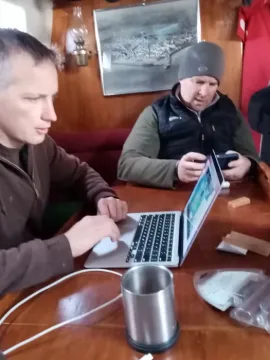
Tues 30.11 – 02.12.21 Another change of wind direction provided a good days sailing and we were starting to think that crossing the Bay at this time of year was not too bad after all. How wrong we were! 24 hours later, whilst on night watch, we were hit by a very strong squall which meant that we had to drop sails and heave to (just turn into the wind and ride out the squall) for the next eight hours. It was not long after this time that in spite of taking the tablets, I eventually succumbed to a bad bout of sea sickness that lasted for the next 36 hours (can't believe how debilitating it can be) and just stayed below deck feeling wretched. I only managed to eat and hold down one banana in all that time – a rather radical way to lose weight. Whilst I was below, there was a more severe change to the weather and Phil and Andy were soaked (for 36 hours) having to deal with a string of further squalls where winds reached up to 47kts (Gale Force 9 and approx 55 mph) eventually having to heave to several more times, if only to get some rest and respite from the weather. (So much for a predicted 15 per cent chance of storms!) Unfortunately, the strong winds had caused damage to both (week old) sails. This meant that we had to make an unscheduled stop at the nearest marina in Sada (near A Coruna) which had a sail loft where repairs could be made. It was also an opportunity to dry out, have showers and take more supplies on board.
After a further delay of two days we finally departed Sada on the afternoon of Saturday 4th with the sails fully repaired. On reaching the open sea we were once again greeted by a high sea with big swells that gave us a roller coaster/cork screw ride which Phil euphemistically referred to as 'sporty sailing'! Because of the sea swell and direction of wind that kept driving us towards the shore and shallow water, we had to tack numerous times adding time and distance to our journey in order to stay in safer waters at least one mile from the coastline. This resulted in a very choppy overnight sail, being tipped from side to side and bounced up and down. Not only was this not conducive to a good night's sleep, but it resulted in a significant increase to my bruise collection! It also made making hot drinks, preparing and cooking meals (mainly boil-in-the-bag) a difficult and risky business, especially when boiling water.
05.12.21 – A BAD END to THE DAY! A following wind made hard work of sailing as we had to continually adjust the sails in order to maintain direction and speed. However, bright and sunny conditions were a welcomed change and added some warmth to an otherwise cold day. Back on watch 18.00-02.00 and travelling at a steady 5kts we eventually passed by Finisterre light house and then entered Portuguese waters. (I always wondered where Finisterre was when listening to the Shipping Forecast).
It was just before midnight whilst Andy and I were on watch that we noticed a distinct increase in the sound of surf and that the water depth under boat had risen to just 25 ft. It was decided that the best course of action was to turn out to sea for deeper water as the swell was getting bigger. Too late!! A great white wall of water at least 20 ft high was racing towards us out of the dark and hit the boat broadside on the starboard, side swamping the cockpit, drenching us and nearly knocking both of us overboard. While Andy was at the bilge pump frantically baling us out, I continued to steer out to sea when we were hit head on by another massive roller which tossed the boat up and down and again threatened to throw us overboard. At this point Phil, who had been asleep, was coming up from below when we were hit broad side on by another massive wave. This damaged the cockpit cover and frame, flooded the cabin (1ft water) as well as the cockpit and drenched Phil who was not in foul weather gear! With all hands to the bilge pumps and me steering further out to sea we managed to reach calmer waters without any further mishap. This had clearly been a very dangerous moment where any one of us could have been swept overboard. The strange thing was that we were all too busy sorting out our situation to be worried or frightened by what had happened. But on reflection, things could have turned out very, very badly. Because of the damage, the cockpit cover and frame had to be dismantled and securely stowed leaving us really exposed to the elements without it. Phil commented later that, "This is the first time I've ever experienced a near death moment!"
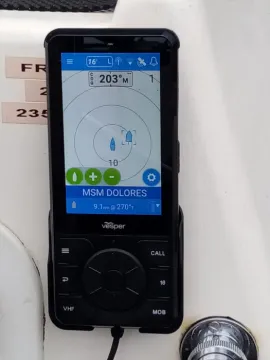
06.12.21 Feeling very soggy and cold we continued to make headway as best we could. Fortunately, it was a lovely sunny morning and we were once again accompanied by dolphins, which helped to cheer us up. By the time I was back on watch again it was RAINING! – just what we need with a further 100 nm still to go to Lisbon and no cockpit cover. Again, changing wind conditions meant that we had to tack, adding more delay, distance and time to our journey. As if conditions weren't bad enough we were then immersed in a thick blanket of fog with visibility reduced to around 100 metres. Fortunately we had an Automated Identification System (AIS) on board which nowadays is used by the majority of sea going vessels. This provides a lot of reassurance displaying notification of type, location, direction of travel and speed of any boat /ship within a warning range of 500 metres up to 80 miles, depending on how it is set up. However, every two minutes we had to sound the on board fog horn as a warning to other boats as a lot of small fishing boats, of which there are many in the area, don't have or do not turn on their AIS. This is to avoid other fishing boats knowing where they are fishing. Looking on the bright side, at least it had stopped raining!
07.12.21 03.00 – Back on watch. Whilst making myself a hot drink to take with me on watch I started to feel queezy , so went and sat on the top step to the cockpit for some fresh air. Next thing I knew I was at the bottom of the steps on the floor of the cabin, supported between Andy's knees whilst Phil was removing blood from a graze and lump on my forehead. I had clearly passed out for some reason and was nursing a sore backside and a dent to my pride. Just another bruise to add to the collection so far! No time for self pity, it was a case of get on with it and straight back on watch. Because of the damage to the cockpit cover and further damage to the luff (front) edge of our main sail Phil amended the plan again and we went to Cascais Marina on the coast where there was a repair facility rather than sail up the Tagus to Lisbon.
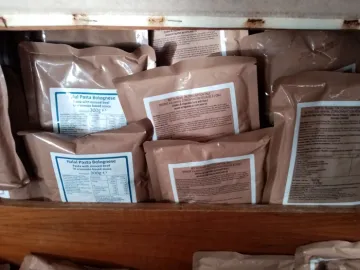
08/9.12.21 Whilst waiting for the repair we spent the days cleaning and drying out the boat and all its storage lockers. All seat cushions were laid out in the sun on the pontoon to dry. (took 2 days to get them dry) Between us we managed to bend the cockpit cover supports back into some shape close to what they should be, providing a reasonable fit, which was good news!
The two day delay meant that we were able to wash our personal clothes and the salt covered wet weather gear and spend some time ashore. Being a vegan, Phil really liked Cascais as it has numerous vegan and veggie restaurants which provided a change from boil-in-the-bag rations! Not my ideal but it was interesting to try alternative types of food.
10.12.21 We had to wait until 18.00 before the sail and cockpit cover were returned and we finally managed to get under way at 20.00 rather than wait until the following morning to continue the estimated six day, second part of our journey to Las Palmas. No sooner were we out of the marina, back into the Atlantic swells, than because of strong winds, we had to reef (reduce the size) both sails to the first reefing point and maintained a steady 6knot pace. (At this rate it will only take 5 days instead of 6 to reach Las Palmas me thinks!) On watch 20.00 to 04.00. It was a dark night lit up by lots of fishing boats well out to sea.
11.12.21 12.00- We passed the 1000 nm point of the journey at the start of my second period on watch. Being more than 100 miles from any land the sea can be a very lonely place. We had only seen one tanker on the trip so far though several more appeared on the AIS but they were often 30 or 40 miles away. The Atlantic continued to provide roller coaster seas, tossing us from side to side and up and down and strong winds that enabled us to reach up to 8 knots at times. Given the time of year we were still spending about 60 per cent of our time sailing in the dark so a half moon was very welcome as it helped with night navigation.
The next couple of days our spirits were lifted as the weather turned to being sunny and the sea state started to ease. However, the wind also dropped and we were making less than the hoped for 5 knots speed. With clear night skies we actually saw the space lab pass by overhead!
From days of roller coaster rides the sea state suddenly turned very calm and it felt like we were crossing a mill pond as the surface or the ocean was so smooth. With a light mist and light from the moon, the atmosphere was very ghostly.
At this stage we were in an area of sea between Morocco and Madeira where, according to Phil's sailing charts there is only a two percent chance of hitting storms at this time of the year. (Really?!)
14.12.21 04.00 Off watch with a complete change to the weather and sea state, going to bed was like trying to sleep in a tumble drier. As the day progressed the wind became so strong we had to fully drop sails and hove to. By 20.00 we tried to make progress by raising the sails but still keeping them reefed (not fully up). I was on watch with Phil as the sky was being lit up by a sheet lightening storm and rain that was circling around us. Being the only vessel around for hundreds of miles we were very concerned that our masts would be an attraction for the lightening. So we altered course several times with the aim of avoiding getting too close to the storm. However, our tactics did not appear to be working as the storm circled around us. At the same time the wind strengthened to 30 knots and the sea was becoming far too rough to carry on safely, so at midnight after four hours of battling with the conditions we had to heave to again for the night. Having had nothing to eat for over eight hours we finally managed to grab a pot noodle to eat. So good when you are really hungry!
15.12.21 08.00 A mixed bag! We were still hove to, being lashed by 40 knot winds and rain. (This shouldn't be happening at this time of year. What happened to the two per cent I ask?!). Finally, by early evening the weather improved and we were able to get under way again, making an average of 6 to 7 knots, with ideal sailing conditions, i.e. a steady wind, good sea state and a moonlit night.
16.12.21 I've mentioned before how the conditions can change so very quickly and just after midnight the wind was getting so strong that we had to reef both sails and battle on. By this time we had gone back to a 3 hour watch system because conditions were so rough that it made the boat very difficult to handle for long periods. Come the morning it was all change again. The sun was out and by lunch time, with a steady cool wind, we were able to revert to full sails and making steady progress at around 5 knots. With still 50/60 nm to go to Las Palmas we are joined by a pair of swallows that kept flying in and out of the hatch cover to my cabin.. The weaker of the two ended up sitting on my head to rest for a minute whilst the other sat in the hatch watching. They eventually bedded down in a corner of the cockpit behind where Andy was sitting. We tried to feed and water them but they were not interested.
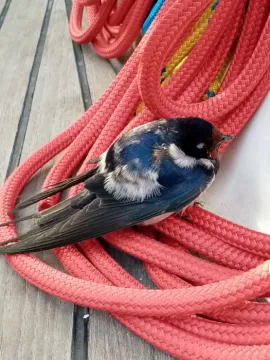
17.12.21 03.00 Unbelievable! A mirror smooth sea again, Las Palmas in sight about 20 miles away and the swallows still with us. Just after dawn the stronger swallow flew away whilst the weaker one stayed with us until we reached land. We finally docked in the Las Palmas marina at 08.00 just 2 days behind schedule but having made very good time given all the incidents and detours on the way down. Covid restrictions meant that we had to stay in Las Palmas to book and take lateral flow tests (PCR for Phil to go to Trinidad) at a laboratory in the town before boarding a flight back to the UK for a well earned two week break over Xmas.
End of Phase 2 – Next, the big one, crossing the Atlantic
Get In Touch
AudlemOnline is powered by our active community.
Please send us your news and views using the button below:
Email: editor@audlem.org

